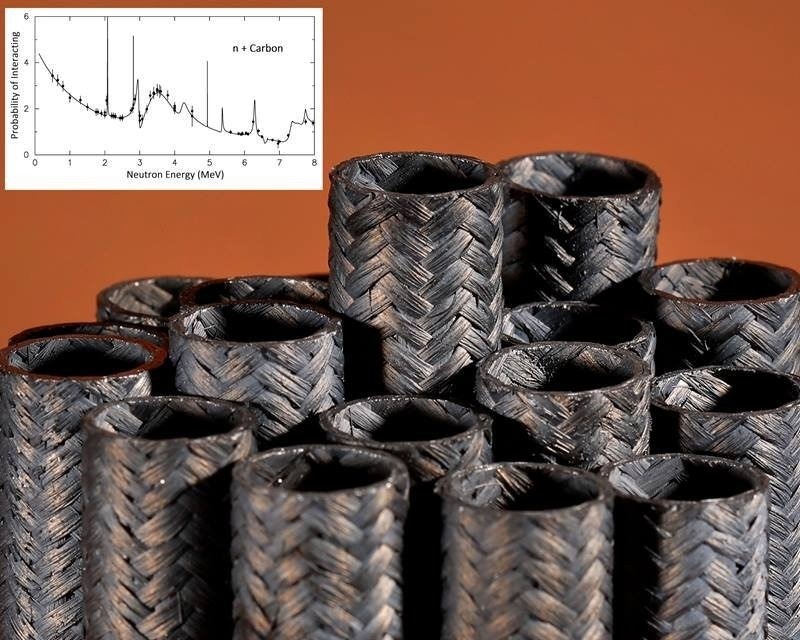Reviewed by Mila PereraOct 28 2022
Carbon and silicon are used in nuclear fission and fusion reactors as shielding and structural materials. Nuclear engineers also use these elements in fuel and neutron moderators, which regulate the speed of neutrons to help retain chain reactions.

Main image: silicon carbide tubes from Oak Ridge National Lab. Inset: University of Kentucky Accelerator Laboratory data on the probability of neutrons interacting with carbon over the range of neutron energies important in fission and fusion reactors. Image Credit: Image of silicon carbide tubes courtesy of Oak Ridge National Laboratory; inset image courtesy of A.P.D. Ramirez
For instance, silicon carbide can be used to encase fuel and as a pellet coating to prevent catastrophes like the one at the Fukushima Daiichi power plant. Neutrons power the nuclear energy-generating processes and determining how neutrons scatter from all reactor materials is critical. In this study, scientists explored the interaction of neutrons with silicon and carbon.
Neutrons leave nuclei and are scattered in a way governed by quantum mechanics and the conservation of energy and momentum. Since nuclear data is embedded in modeling and simulation software, scientists must thoroughly understand how these uncharged particles interact with materials.
These statistics also influence how well a system performs. In this study, published by Nuclear Physics A, researchers evaluated the energy and angle dependence of neutrons scattering off silicon and carbon. The findings reveal answers that researchers can only obtain through experimentation.
Several applications are based on global theoretical models of neutron-nuclei interactions over an extensive range of incident neutron energy. These applications include everything from energy generation to homeland security to medical treatments.
These models were created by researchers by comparing calculations to experimental evidence. Excellent concordance between facts and theory implies that the neutron-material interaction is well known. This procedure assists scientists in developing confidence in their knowledge of nuclear force and engineers in developing safer and more effective reactors and scanners.
Carbon and silicon are two of the essential elements being studied at the University of Kentucky Accelerator Laboratory by researchers and students from the University of Kentucky, the United States Naval Academy, Mississippi State University, and the University of Dallas.
The energy and angular dependence of neutrons scattering from these materials indicated areas where researchers might enhance theoretical models, particularly for excited states in each nucleus, which offered enhanced models for neutron behavior in various applications.
The study was funded by the Department of Energy (D.O.E.) Office of Science, Office of Nuclear Physics, the D.O.E. National Nuclear Security Administration Stewardship Science Academic Program, and the D.O.E. Nuclear Energy Universities Program.
The National Science Foundation and the Donald A. Cowan Physics Fund at the University of Dallas also supported the study. Isotopes used in the study were supplied by the U.S. Department of Energy Isotope Program.
Journal References
Ramirez, A. P. D., et al. (2022) Neutron elastic and inelastic scattering differential cross sections on carbon. Nuclear Physics A. doi.org/10.1016/j.nuclphysa.2022.122446.
Ramirez, A. P. D. et al. (2022) Neutron elastic and inelastic scattering cross section measurements on silicon from 0.8 to 8 MeV. Nuclear Physics A. doi.org/10.1016/j.nuclphysa.2022.122474.